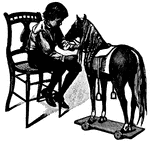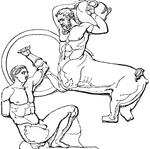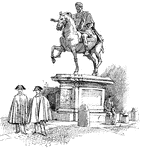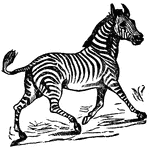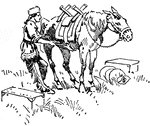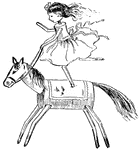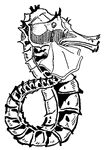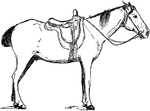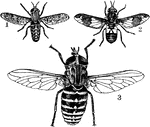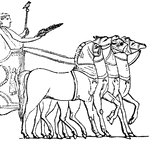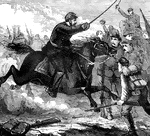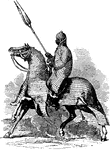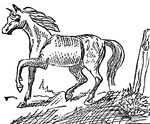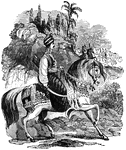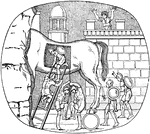
Human skeleton
"There are in all two hundred and six seperate bones in the adult skelton. The teeth are not bones,…

Scapula
"The shoulder-blade is a large, flat, three-sided bone, which is placed on the upper and back…
Humerus
"The humerus, a long, hollow bone, rests against a shallow socket on the shoulder blade. It…
Ulna and Radius
"The ulna, or elbow bone, is the larger of these two bones. It is joined to the humerus by…
Bones of the Foot
"The foot is built in the form of a half-dome or half-arch. This is to afford a broad, strong support…

Skeleton of the Mammoth
"Mammoth is a species of extinct elephant, the fossil remains of which are found in European, Asiatic…

Megatherium
"Megatherium is a genus of extinct edentates, founded on a nearly complete skeleton discovered on the…
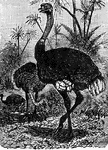
Ostrich
"The Ostrich is the largest of all living birds, standing from six to eight feet in height, and has…
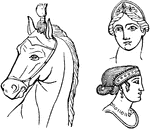
Amphyx
"Amphyces, Frontlets. A frontal, a broad band or plate of metal, which ladies of rank wore above the…

Coin of Diviciacus
The Coin of the King of the Suessiones, Diviciacus, with bust on front and prancing horse on back. Front.
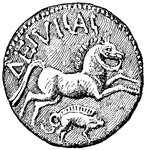
Coin of Diviciacus
The Coin of the King of the Suessiones, Diviciacus, with bust on front and prancing horse on back. Back.

Little Jack a Dandy
Little Jack a Dandy wanted some sugar-candy; And fairly for it cried; But little Billy Cook, Who always…

Signa Militaria
"Signa Militaria, military ensigns or standards. The most ancient standard employed by the Romans is…
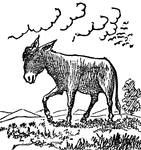
Donkey
A beast of burden of the horse family, having a peculiarly harsh bray, and long, slouching ears.

Rein
The strap of a bridle, fastened to the curb or snaffle on each side, by which to restrain and govern…

Spur
An instrument having a little wheel, with sharp points, worn on a horseman's heels, to prick a horse…

Hames
The curved pieces of wood or metal by which the traces and body-harness of a horse are attached to the…
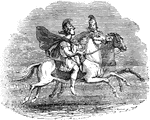
Theseus and Helen
"In the year 1234 B.C., Theseus came to the throne of Athens. He was one of the most renowned characters…

Trojan horse
"According to the poets, it was by stratagem that this famous city was at last overcome. They tell us…

Victors at the Olympic Games
"From a very remote period, the Greeks had been accustomed to engage in contests of strength and agility…



